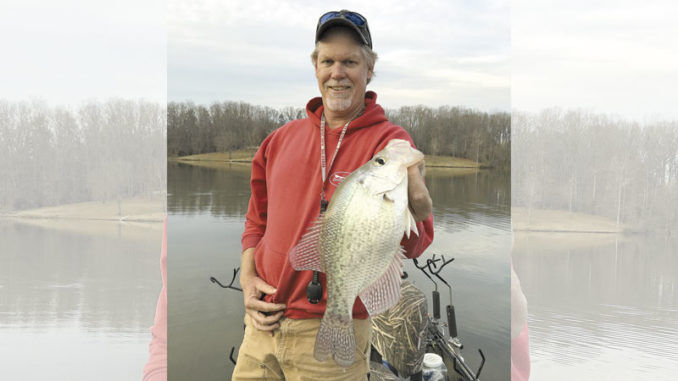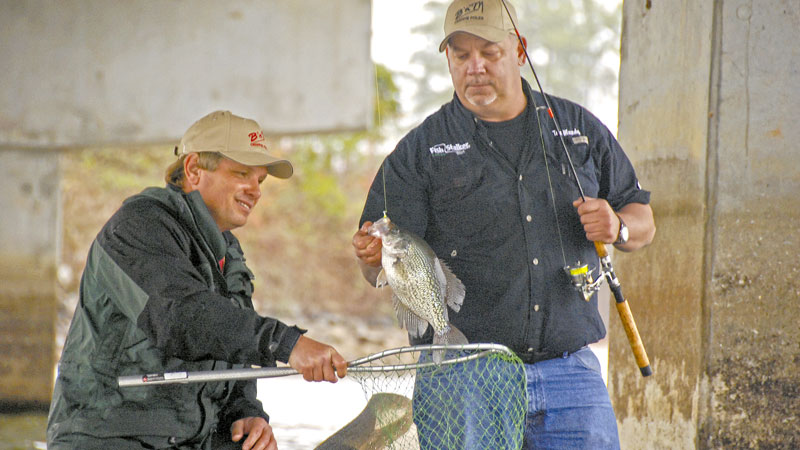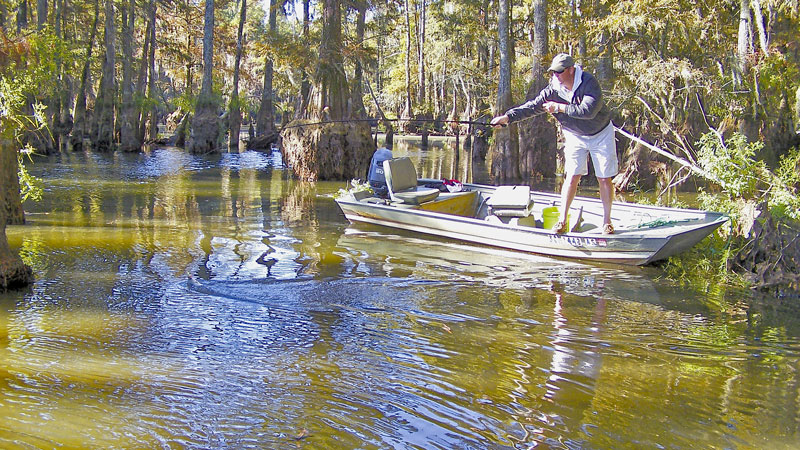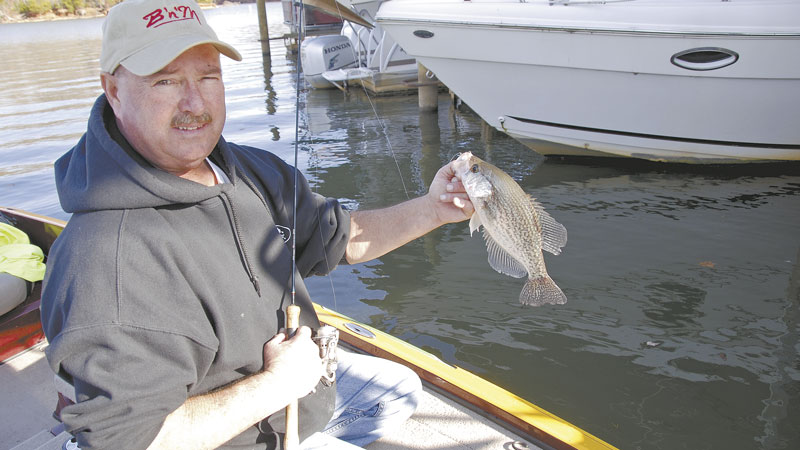
Catch slabs in these kinds of places, and have fall success just like spring — except for the crowds.
To say a particular fishing spot or pattern is “overlooked” assumes that other folks are fishing, just not in the right places. Crappie fishing in the fall, however, generally means the entire lake is overlooked, since most folks are out sitting in a tree, a football stadium or in front of the television.
Nonetheless, there are particular areas that hold respectable numbers of crappie that other anglers simply either don’t fish or aren’t aware of their fish-holding potential.
One thing these places have in common is they find favor to crappie that are seeking asylum from the fall turnover and/or are an easy stop between the fall migration from deeper water to shallow.
Here’s a look at five of them:

Bridges
Tom Mundy, the owner of Fish Stalker Lures, said fishing bridges is a lot like fishing a vertical brush pile that comes all the way out of the water. In fact, most of the sweet spots he likes to fish under a bridge are where brush has been placed intentionally or collected naturally.
“It took me a long time to distinguish between a bite and the jig bouncing off a limb,” said Mundy, who is from Laurens, S.C. “The secret is watching the rod tip. When a crappie sucks the jig in, the rod will go from a limber bounce to a stiff look; that’s when it’s time to set the hook.
“You can also watch the line,” he said. “The line will twitch long before you feel it with the rod or it will start piling up in the water, which says the crappie sucked it in and is holding still while the line’s still sinking.”

Swamps
Pro crappie angler Whitey Outlaw of St. Matthews, S.C., grew up fishing in the Santee swamps, and he said they are the only places that are guaranteed to produce a limit of fish every time he fishes there. Cold fronts, wind, barometric spikes-nothing disturbs the crappie fishing because the fish are insulated under mats of grass and heavy cover.
“I run my flatbottom john boat up into the middle of a grass mat and leave the motor running,” Outlaw said,” then I pull out a rake and rake a hole in the grass and fish in the hole — sort of a southern version of ice fishing.”
When he’s fishing around clusters of cypress trees, he’ll stick his rod tip through the limbs and lower a jig down into the hollows of cypress trunks. Retrieving a fish often entails bringing in the line hand-over-hand until he can grab the fish.

Marinas
Mike Parrott of Charlotte, N.C., a former Crappie Masters national champion, loves to target deep-water boat docks any time of year. He said that crappie will relate to docks in marinas as a current break as well as providing security and an ambush point for feeding on baitfish. Parrott believes that a particular segment of crappie will take up year-round residence around larger residential and commercial boat docks.
“Everything these fish need can be found around big boat docks: depth, food and cover,” Parrott said, “All they have to do is move from shallower to deeper as the season dictates.”
In order to target crappie hiding under the boats and floats that make up a large dock complex, Parrott employs the tactic of “shooting” docks — holding the jig by hand and bending the rod tip before letting go and slinging the jig well back under the platform. The slow fall of a semi-buoyant jig is often more than the fish can stand.
Shallow, Open Water
For most of the year, veteran crappie fisherman Stokes McClellan of Huntersville, N.C., prefers to long-line troll for crappie, but especially during the fall when slabs are scattered and in the backs of creeks following schools of baitfish.
“Before I set down to fish, I’m going to pass over the area and look for bait,” he said. “Finding fish is good, but I’m looking for bait first; the fish will be there if the bait is there.”
The lion’s share of McClellan’s trolling runs will be parallel to or over the top of a channel edge. Channel edges typically encompass prime crappie-holding structure: stumps, brush and breaks in the terrain. Since structure is almost a given and the presence of fish is a plus, finding bait in proposed trolling run signals to the pro it’s time to set out the rods.
Standing Timber
According to veteran crappie pro Rod Wall of Ninety Six, S.C., finding and catching crappie in the fall is very similar to finding and catching crappie in the spring — only in reverse. The biggest difference is that fall crappie are not interested in spawning but are moving from deep water to medium depths and shallow water to find favorable water temperatures, better oxygen content and food.
One of Wall’s favorite ways to intercept reverse-migrating crappie in the fall is to find them holding in and around natural standing timber. In lakes where standing timber is an option, he will use a single pole to jig around the cover.
“I’m not looking for the big stands of timber,” he said. “My favorite is to fish the points of timber or that isolated tree on the edge.
“When you’re in a stand of timber, it’s tough to use sonar,” Wall said. “I’d rather fish a cluster of trees that might be on the tip of a field of timber versus going into the really thick cover. My opinion is the fish stay close to the river channel. Any time you can get on a creek or a river channel that’s got any kind of different topography, you’ll almost always find some decent fish.”


Be the first to comment